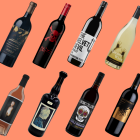Exposing wine to certain types of light can create very unpleasant aromas.
Wine, if not produced and cared for properly, is susceptible to a number of faults. Cork taint is probably the most well-known issue, yet there is another that’s more pervasive and not as well understood: light strike.
The science of light strike
Light strike (or goût de lumière as it is known in French) occurs when wine is exposed to sunlight and/or fluorescent light – light with shorter wavelengths of 200-420 nanometres (visible light has a wavelength of between 400 and 700 nanometres).
The light reacts with riboflavin – naturally present in wine – and photo-oxidises amino acids into compounds such as dimethyl disulfide (DMDS). The result? Unpleasant sulphur compounds in the wine that at best will dull bright fruit flavours and at worst introduce a series of foul smells such as rotten eggs, cabbage or even sewage.
A secondary reaction can also see light react with tartaric acid in wine to form glyoxylic acid and hydrogen peroxide, which can contribute to the accumulation of yellow and brown pigments. In both cases, the effect is irreversible.
Research has produced mixed results on the period of light exposure needed for light strike to take hold, but most experts agree that the most delicate wines can be affected within as little as one hour.
Which wines are susceptible to light strike?
Light strike generally affects more delicate styles, such as whites, rose and sparkling wines. Red wines tend to be more resilient, with research suggesting that tannins in red wine can help to block light strike reactions.
What effect does bottle colour have on light strike?
A wine’s glass bottle is its first line of defence against light strike. Green glass blocks upwards of 50% of harmful light, depending on its hue. Interestingly, wine was historically bottled in green glass as it was the easiest to produce in large quantities – it actually predates any understanding of light strike.
Clear glass, meanwhile, blocks as little as 10% of light strike wavelengths, and yet it’s becoming an increasingly popular bottle choice for many producers, especially those that make rose, which is enjoyed as much for its colour as its taste. Wine faults in clear glass bottles are 20 times more prevalent than cork taint,
Amber, however, blocks some 90% or more of harmful rays. This is why the most historic and renowned of clear glass bottles, Louis Roederer Champagne’s Cristal, is wrapped in orange-coloured cellophane wrapping, which filters 98% of harmful light.
What are winemakers doing about light strike?
Light strike has only become properly understood in the last several decades or so, although its associated importance has yet to catch up. Some producers are taking action, though. English producer Nyetimber has rejected green glass in favour of very dark amber, while Ruinart has developed a lightweight ‘second-skin’ for its bottles, crafted from recyclable carton. Many premium rose producers, meanwhile, package their bottles in an additional gift box.
How can you avoid light strike?
At home, keep wines away from direct sunlight and store your wine in the coolest, darkest part of your house. If you want to take additional precautions, you might install LED bulbs in the area where you store your wine, thus eliminating harmful light rays altogether.
If you’re out and about, pay attention to a restaurant or bar’s décor, and from where they retrieve your bottle. Those bottles of wine dotted around the venue for style purposes should be for show only!






